Contents
ExpandIntroduction: Tanks and Their Weak Sides

If you ask a layman what they think when they hear the word “tank,” in most cases they will respond with “heavily armoured vehicle,” “mobile fortress,” “steel bunker” and so on. Each of these associations reflect the general impression that tanks are hard, sturdy, impenetrable machines that are almost unstoppable when advancing. That is all true to a certain degree, especially from the perspective of infantry armed with nothing but anti-personnel weapons. However, in reality, there is no such thing as an unstoppable vehicle, and even tanks have their weaknesses.
Being a breakthrough combat vehicle, the tank usually faces the enemy with its front side, so this is naturally in most cases the part with the thickest armour, both on the turret and the hull. Its sides and, above all, the rear are a different story, though. Therefore, the easiest way of damaging a tank - especially of the heavy class - is to attack it from the flank or from behind. Here’s why exactly:
- Tank sides: Attacking the enemy vehicle from the side has numerous advantages. The most obvious one is the much thinner armour of that part. This means that your shells will have an incomparably higher chance of penetrating and dealing damage, even if they’re of an inferior caliber. What is also important, tanks are much bigger from the profile than from the front, so catching an enemy vehicle from the flank gives you a bigger and thus easier target to hit. Last but not least, shooting at the sides creates more opportunities of damaging the enemy’s modules and injuring their crew members. Remember, damaged modules or a knocked out crew translate to a reduced combat effectiveness of the enemy vehicle.
Remember, however, that there are some exceptional vehicles that may have strong sides as well. The VIII
VIII
IS-6 , for example, is notorious for scoring many 0 damage shots fired at its sides, thanks to the spaced armour (two or more plates, mounted with a gap between them, which are capable of drastically reducing the projectile’s kinetic energy upon impact) mounted above its tracks.
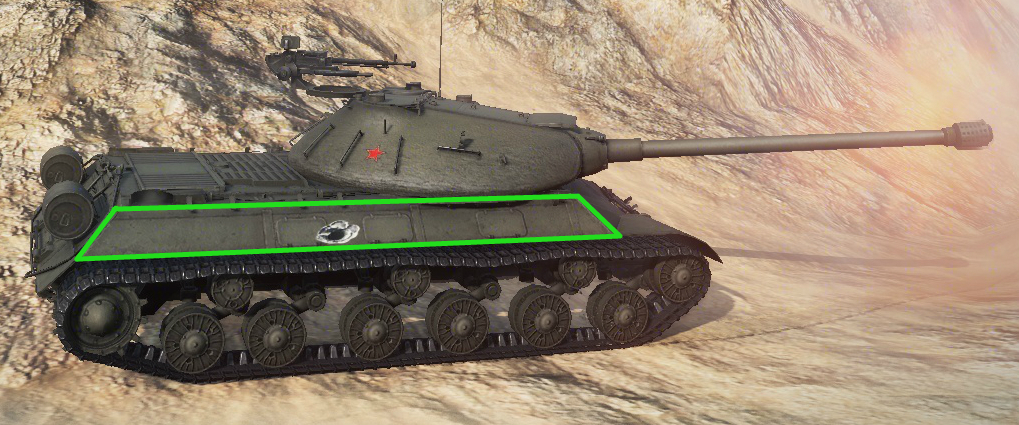
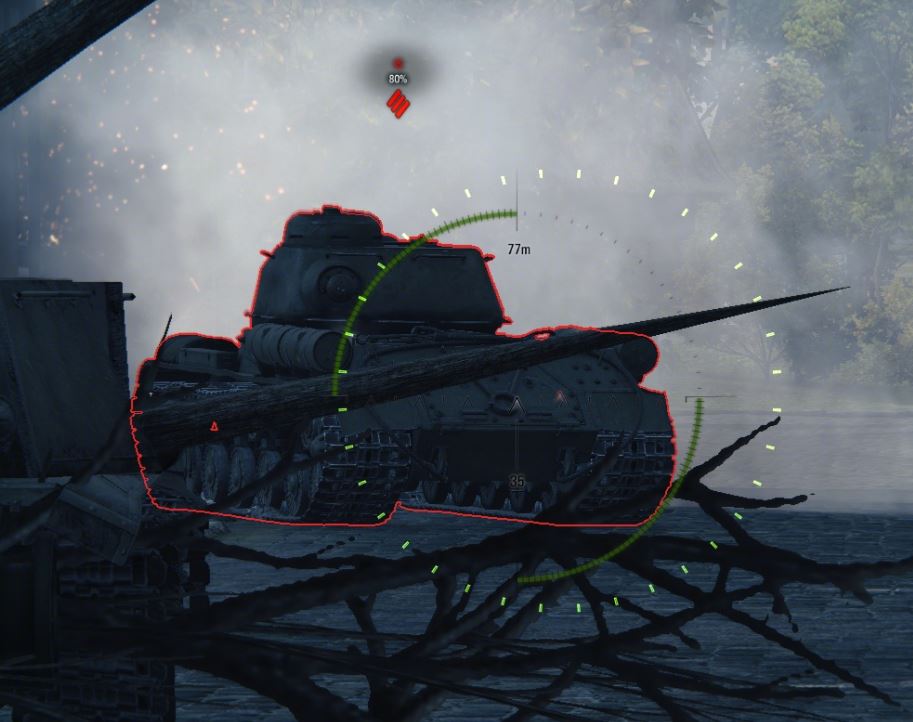 Tank rear: This is the most vulnerable part of any tank and the ultimate gift for any gunner blessed with the opportunity to fire some shells at it. Being in most cases only lightly armoured (if at all), shooting the rear means guaranteed damage almost every time. Additionally, mind that this part of the tank is the place where the engine compartment is located. As a result, landing shells there may additionally damage this module and, with a bit of luck, set the enemy vehicle on fire, causing extra damage every second until the fire is put out.
Tank rear: This is the most vulnerable part of any tank and the ultimate gift for any gunner blessed with the opportunity to fire some shells at it. Being in most cases only lightly armoured (if at all), shooting the rear means guaranteed damage almost every time. Additionally, mind that this part of the tank is the place where the engine compartment is located. As a result, landing shells there may additionally damage this module and, with a bit of luck, set the enemy vehicle on fire, causing extra damage every second until the fire is put out.
The catch is that no sane enemy will approach you rear-first in combat, and if they have some experience and common sense, they will do everything in their power to deny you the opportunity of even taking as much as a glimpse of their tank’s rear.
Frontal Weak Spots
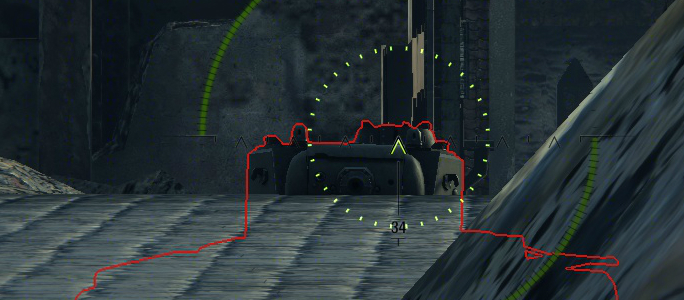
Having covered all the sides of a tank but one, the time has come to discuss the front. As aforementioned, this is the most armoured part for a large majority of tanks, especially when it comes to heavy tanks. Therefore, confronting the enemy head on may be a very difficult task and the source of great frustration, accompanied by the sound of your shells bouncing off one after another.
However, bear in mind that no armour is impenetrable. In fact, even the frontal plates are not uniform on their entire surface and have various soft spots, which are usually much thinner, and thus easier to penetrate. These are commonly referred to as Weak Spots. Knowing them can give you the upper hand in a direct confrontation and/or allow you to deal damage even if, in theory, your gun shouldn’t leave as much as a scratch on the enemy armour.
Common Weak Spots
Below you will find a summary of the most common weak spots, which can be found on most tanks. Also, note that shooting them may result in causing additional critical damage to one or more modules/ crew members. Of course, these are not all possible weak spots a tank may have. Feel free to experiment and discover additional points of interest and special soft spots on individual vehicles on your own.
 Turret cupolas/ hatches: These parts can be located on the top of the turret, usually on the side. The hatches are used as both vehicle exits for the crew and observation stations. It is recommended to aim for them when in face-to-face close-quarters stand offs.
Turret cupolas/ hatches: These parts can be located on the top of the turret, usually on the side. The hatches are used as both vehicle exits for the crew and observation stations. It is recommended to aim for them when in face-to-face close-quarters stand offs.
Possible side effect upon hit: damaged view ports (reduced vision range), injured crew member (usually Commander or Loader).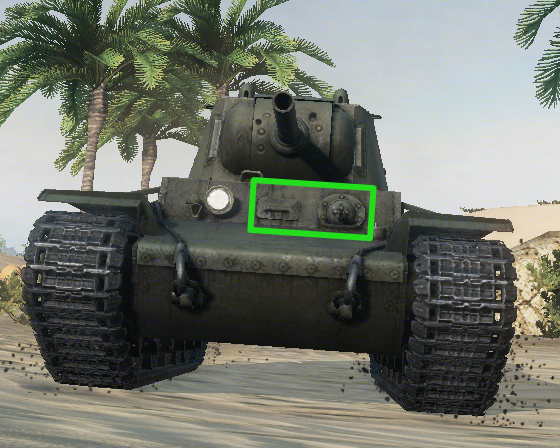 Hull machine gun hatch/ driver’s visor: Located usually on the tank’s upper frontal plate, these spots are relatively small and thus difficult to hit. However, in some cases aiming for them is the best chance you may have to inflict damage, especially if the lower plate is behind cover.
Hull machine gun hatch/ driver’s visor: Located usually on the tank’s upper frontal plate, these spots are relatively small and thus difficult to hit. However, in some cases aiming for them is the best chance you may have to inflict damage, especially if the lower plate is behind cover.
Possible side effect upon hit: Injured crew member (usually Gunner or Driver)- Track idler & main drive sprocket: These are the large wheels that you can find on both sides of the tank’s front and rear. Shooting them is the perfect way of immobilizing the opponent. To maximise fire effectiveness, shoot at a certain angle, so that your shell enters the hull after having pierced through the wheel.
Possible side effect upon hit: broken suspension (opponent immobilized)
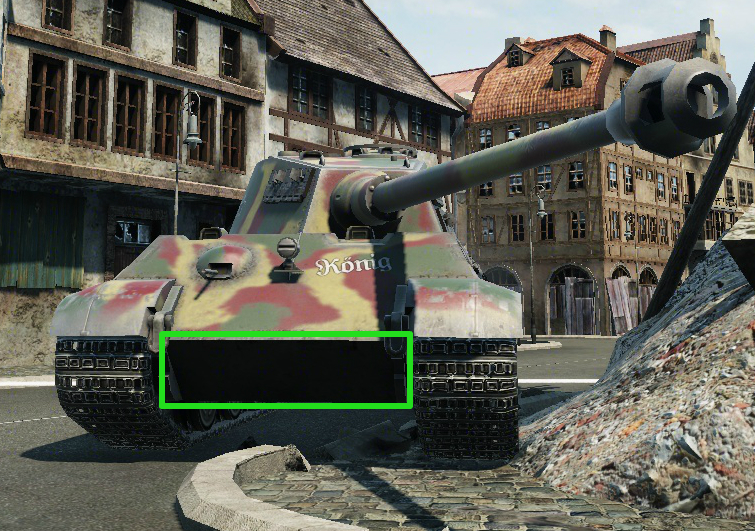 Lower glacis: The weak spot of choice on mid-distances. It is usually relatively big and consequently easier to hit than other weak spots. Also, aiming for it is especially effective when fighting vehicles with front-mounted transmission (most commonly German tanks).
Lower glacis: The weak spot of choice on mid-distances. It is usually relatively big and consequently easier to hit than other weak spots. Also, aiming for it is especially effective when fighting vehicles with front-mounted transmission (most commonly German tanks).
Possible side effect upon hit: damaged engine (reduced speed, acceleration and manoeuvrability), damaged ammo rack (only certain vehicles) Turret ring: A difficult weak spot to hit due to its small size and the fact that it’s usually located between angled surfaces of the frontal plate and the gun mantlet. As a result, your shell may bounce off more often than land. If possible, prioritise other weak spots.
Turret ring: A difficult weak spot to hit due to its small size and the fact that it’s usually located between angled surfaces of the frontal plate and the gun mantlet. As a result, your shell may bounce off more often than land. If possible, prioritise other weak spots.
Possible side effect upon hit: damaged turret (turning speed compromised), injured crew member (varies)
-
 X
X
T110E3 : Turret machine gun cupola
-
 IX
IX
VK 45.02 (P) Ausf. B : Lower glacis (200mm thick and angled)
- Various German tanks: hull machine gun hatch (with rounded shielding)


